On the final day of our ATTC Calgary residency, the billboards launched. We headed out in the early afternoon with Randy to document them all.
Alongside highways, on the sides of buildings in the downtown core, and mixed in with other urban-fringe architecture. The billboards stood deeply embedded and clearly removed from the landscape, at times being rotated amongst advertisements, and in other instances, acting more directly as annotations to the site of installation.
As a final trajectory of ATTC Calgary, these billboards were installed around the city noting a series of cyclical narratives. Using the phrasing, “…and then the city…” each billboard features a different statement that referenced an overarching narrative or perhaps a brief moment in time about the city, read either internally or externally. These billboards are aimed at creating a space for a momentary discussion around the possibilities in narratives themselves, which is centred on one’s personal connection, history, and knowledge on the city.
In total, TRUCK had secured us seven billboard locations spread throughout Calgary, concentrated in the downtown core and in the city’s industrial edge.
The billboards had always been a planned part of the ATTC project, serving as a both a frame and an access point for our research and practice. As the project developed out of our Save the City project back in Windsor, we had been interested in continuing with the billboard aspect of the project whenever possible.
“…and then the city blew things out of proportion.”
By working with billboards, we’re interested in providing temporary annotations for the city, for our experience of the things that we shape as cities. The texts we’ve selected reference a variety of narratives that are told about Calgary or enacted through daily practice, and are at once specifically grounded in the city’s histories and current situations and universal to become accessed from a variety of perspectives.
“…and then the city changed politics forever.”
Text provides a different point of access to an idea than a visual representation. We work in text so often to try to provide a different kind of entry to a dialogue that we’re interested in unfolding or initiating, and billboards become a further entrenched point of alternative access to an idea or dialogue as becomes buried alongside advertisements.
In some cases, we spotted the billboards as we drove by them.
Once parked, we documented each one.
“…and then the city made better decisions.”
The particular texts on these billboards were written based on our research and expectations of Calgary alongside the narratives that have circulated around the city in rumours and official channels, ahead of arriving for our residency.
“…and then the city forgot its roots.”
Once we arrived in Calgary, we understood these texts to pertain to a variety of different narratives we heard and experienced.
“…and then the city started to feel a little different.”
Narratives of change around the city and hope for what the city may become seemed to align with the billboards in an interesting way — again, we related these texts, these annotations, to nuances and histories that we heard and experienced while we were in the city, and we imagine that for anyone reading these texts, there are specific instances in understanding the city from their experiences that they attribute to these texts.
“…and then the city made up for all of its mistakes.”
Working publicly in this way continues to provide us with new contexts from which to think about our practice. At the edge of the Deerfoot Trail, we found our final billboard.
Six lanes of traffic.
“…and then the city kept doing the same thing it always did.”
Josh and Michelle at the edge of the road.
Later in the evening, our final event — distributing our publication at Central Memorial Park.
The printing turned out really well and we were quite happy to see 100 copies start to disappear. The publication was entitled, “short cuts & other practices: 10 days in a western city.”
Josh reads through a copy of our publication.
I’ve included some quick shots of the publication, and you can also download a copy in PDF for yourself.
The introduction.
A framing essay.
Our algorithmic walk and tweets.
Outlines of imagined shortcuts in space.
Recaps of our events.
Thinking about what we did and how it engaged us in larger discussions and ideas around understanding the city.
Stickies detailing things to love and hate about Calgary.
Fill-in-the-blanks.
“My first memory of Calgary is the ride in from the airport, traffic and fields of shingles.”
Fill-in-the-blanks.
Chalkboard timelines.
Overviews.
Projections.

Details.
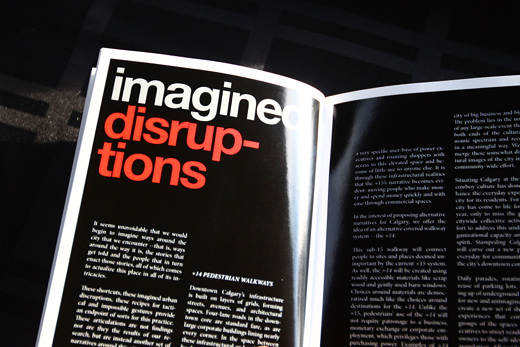
And suggestions for further disruptions and shortcuts.
Thanks.
We distributed the publication at Central Memorial Park under the familiar tent where Randy and Todd setup a slideshow of photos of the billboards and stacks of our prints.
We gave away a good number of them, and got to catch up with some return visitos.
Billboards on-screen.
Some folks we caught up with are planning to attend Homework, which is amazing!
Flipping through the publication.
The evening wound down at the nearby Hop and Brew. The next morning we headed back to Windsor.
Our residency with TRUCK was incredible and we’re quite anxious to revisit this work in the near future to get some further insight into the practice we began to develop and will continue to unfold in London, Ontario at Forest City Gallery in September. We would like to express our sincerest gratitude to the staff and board of TRUCK Contemporary Art, especially Renato Vitic, Randy Niessen, and Todd Rederburg. This project would not have been possible without their assistance and support.
To attempt to summarize ATTC Calgary would be somewhat counterproductive to our interests. Summaries and conclusions were never the aim of this project, but rather, the efforts to unfold ideas around locality and the development of a practice that can work towards that aim were central to our work. The publication, which you can download (and excuse us for the low-res PDF, file sizes are difficult to manage, along with spelling mistakes, etc [and there are a few], the turnaround time was incredibly tight), was something we hadn’t planned out before arriving, but proved to be a really important part o the project for us. It aided us in thinking through our project more deeply and to view the work in a much more collected and condensed summary than our blogs or iPhoto libraries would normally allow. I imagine we’ll be attempting more of these on future projects.
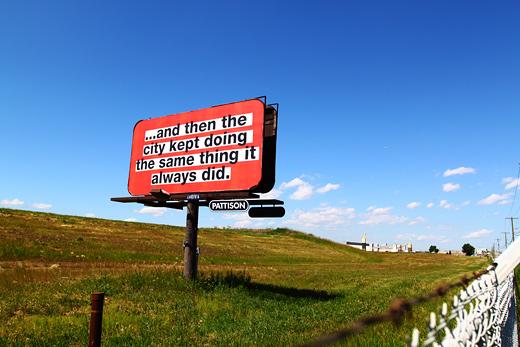


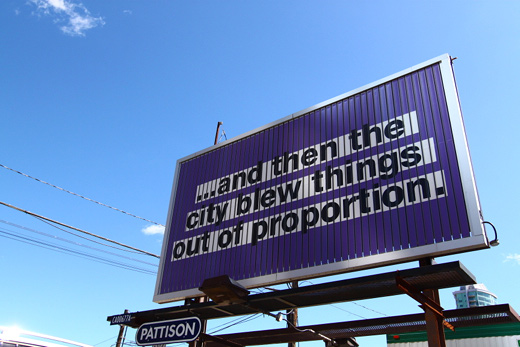
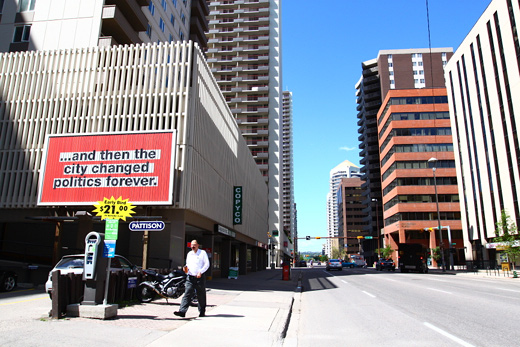
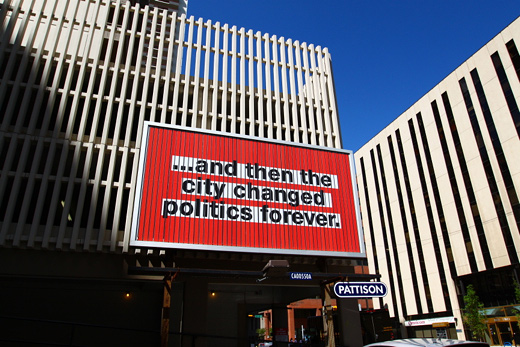


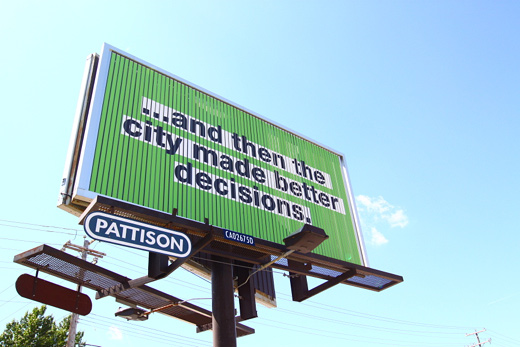

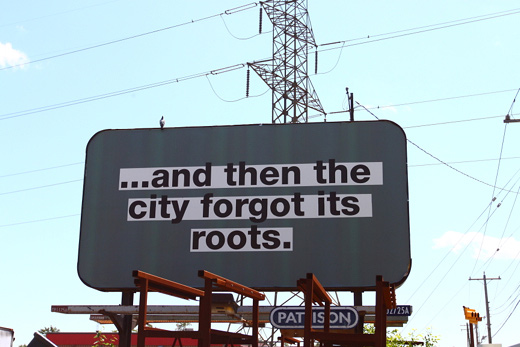
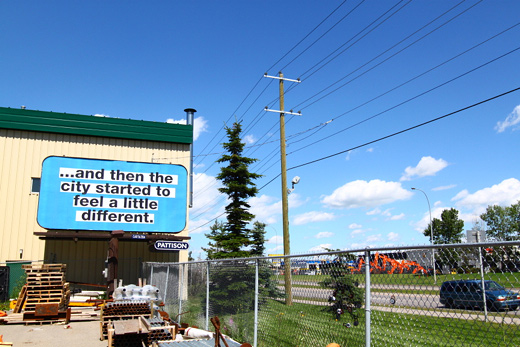
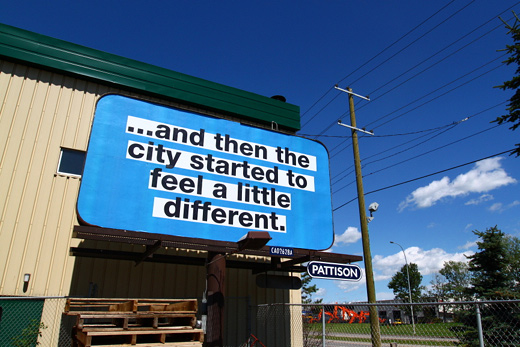


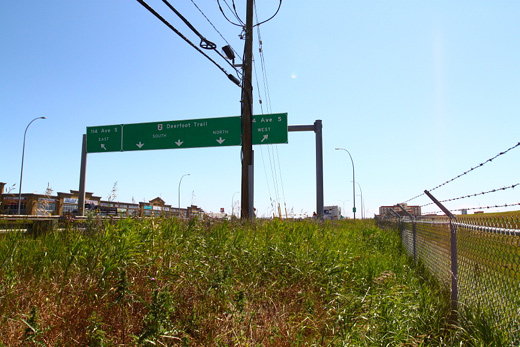
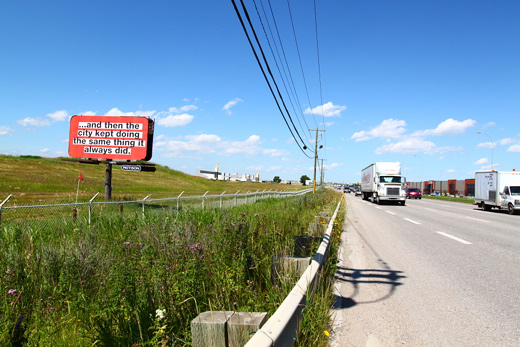



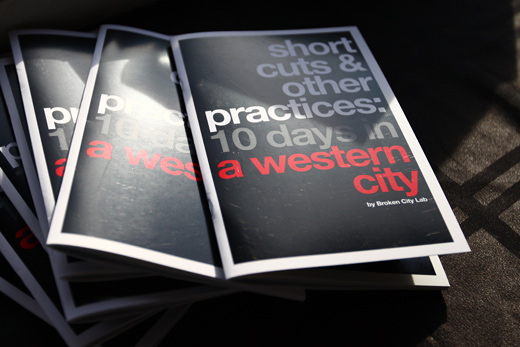
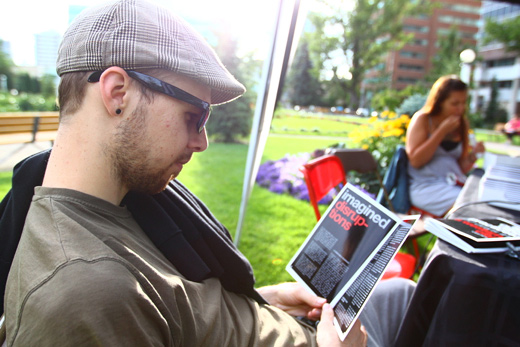
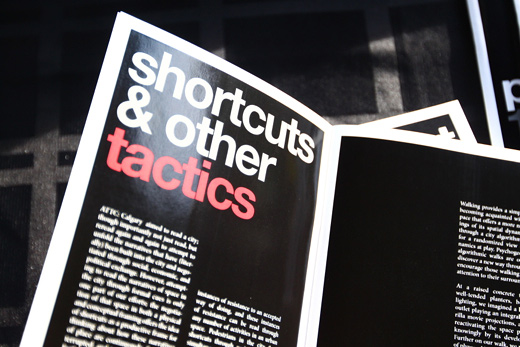
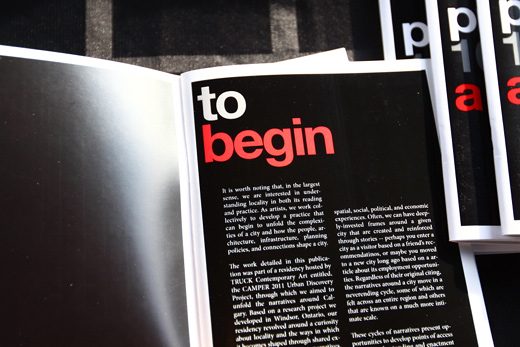
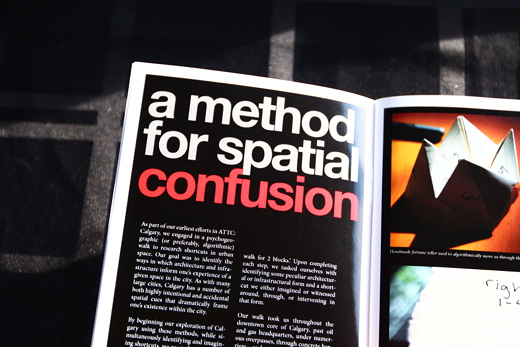


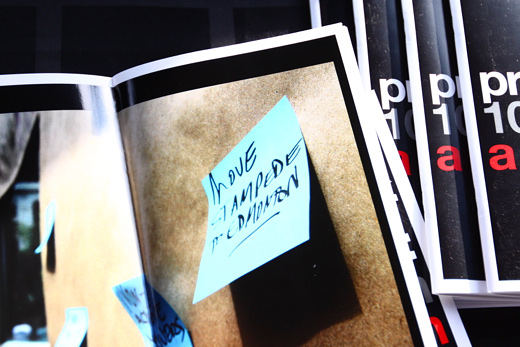
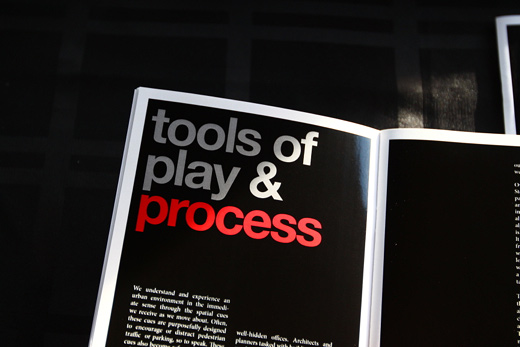
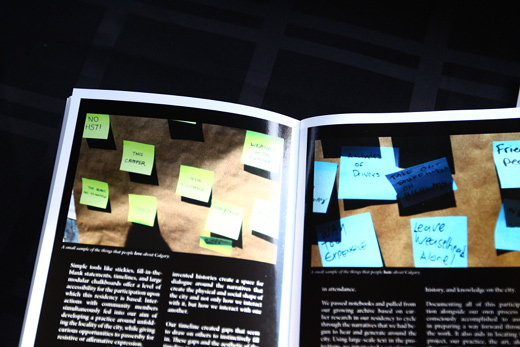


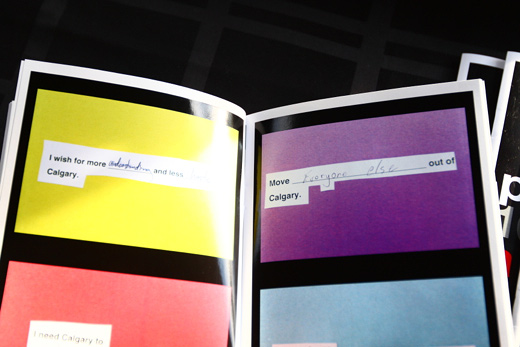
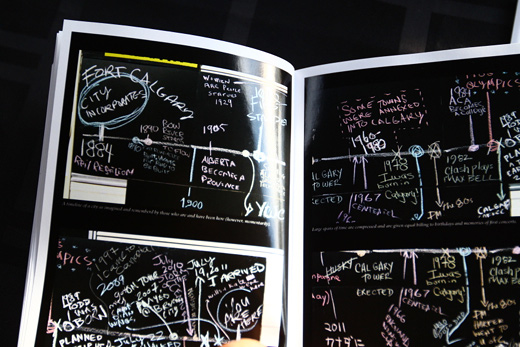

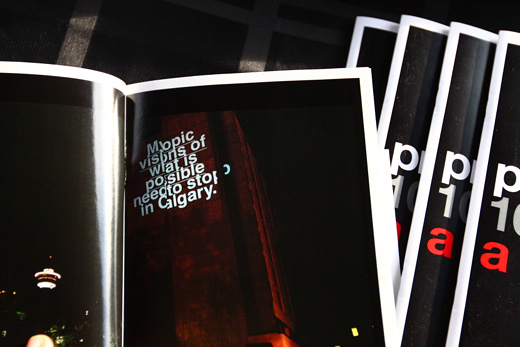

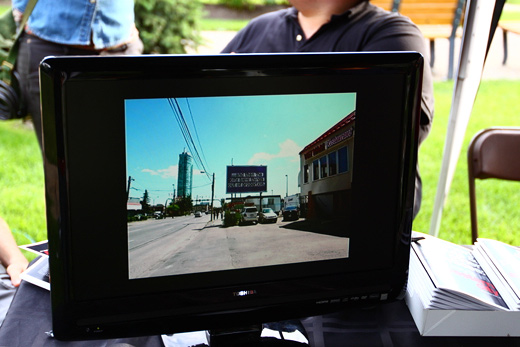
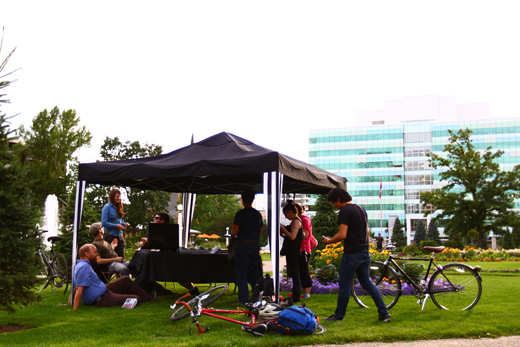
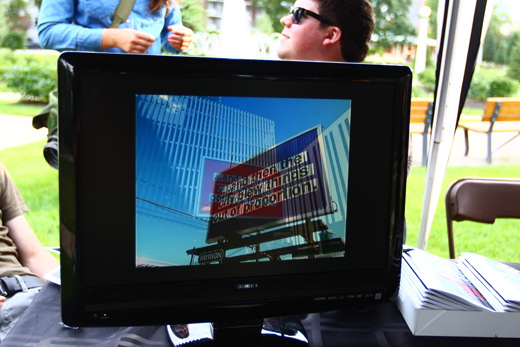


Unfolding the cycles of the city, what a great Broken City campaign! If you love yours, you have to check this out http://t.co/BIpY7Wy
Just wanted to send a sincere THANK YOU to the Broken City Lab team for taking on this daunting task. As a Calgarian myself I thoroughly appreciated reading the blogs and seeing my city from your perspective. Also, as someone that is desperately interested in a more engaged community you have given me a lot to think about and renewed hope.
Whoa! Wait! What?! Get your eyes on this » http://ht.ly/5VEJm #design #community #cities
Having read most of your entries on the city, looks like you guys came along with your preconceived ideas and sought out to confirm your own tired stereotypes about the place. Most people here got tired of simply criticizing the place and got into the business of making it better. Just take a look at who the Mayor is…
All the entries were from people we interviewed on the street. I personally found the city pretty inviting and mostly balanced. Fortunately those negative stereotypes seemed to be enforced by Calgary residents and didn’t come from our experiences with the city. We thought it would be biased not to include them. That’s great that concerned citizens are getting involved in the political end of things!